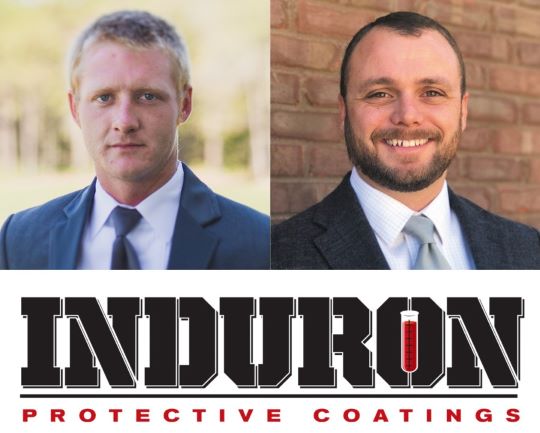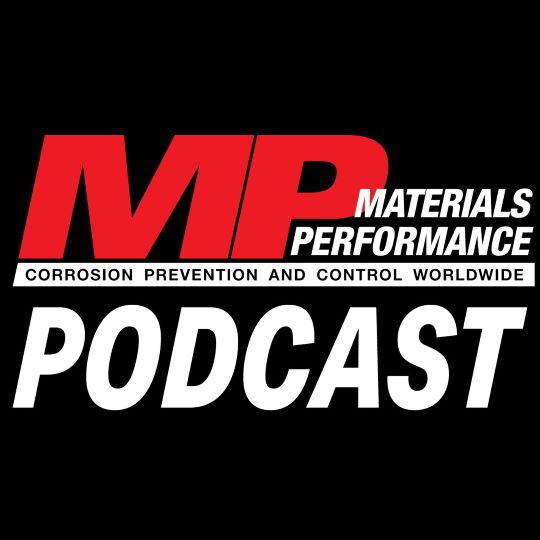In a recently published white paper, experts at Induron (Birmingham, Alabama, USA) examined the expected service life of coatings for potable water linings while combining that knowledge with an interpretation of the total applied costs of these systems.
Founded in 1947, Induron produces high-performance coatings to serve a wide range of industrial applications. These applications include industries such as wastewater, electrical transmission and distribution, and potable water storage and treatment.
On a recent Materials Performance (MP) Magazine podcast, Induron’s William “Bill” Seawell, technical service manager, and Andy Odorzynski, national sales manager, elaborated further on expectations for water tank primers (both zinc and epoxy); how corrosion processes work; and the most important properties a water tank primer should have.
Read on for a partial Q&A transcript of that episode, and listen to the full interview online at www.materialsperformance.com/podcasts or at the embedded YouTube link below.
Q: What are the properties that an asset owner is looking for in a water tank primer? And how do both epoxy and zinc-based primers fit into that?
Bill Seawell: A primer is a facilitator for the rest of the coating system. So, a primer must necessarily be there to facilitate subsequent coats sticking to it.
However, at Induron, we believe the majority of the work should be done by the liner… and by the barrier properties of the liner. So, an ideal primer must have sufficient adhesion to stick to the substrate, and sufficient adhesion to stick to the topcoat. And it should not have any property that can compromise the performance of the lining.
We do not believe the immersion primer properties, in the dry film, should drive the bus on the spec. The primer should not inhibit the installation of a lining system. If it does so, it’s a bad primer. If it does not, it’s an acceptable problem.
Andy Odorzynski: I’ll add a little context, as well. Because while we’re discussing these technical aspects of coatings performance, there’s another piece to this story, as far as how things have worked for applicators in the field.
One of the other changes that came along with those historic epoxies, which Bill mentioned regarding the transition to urethane zincs on water tanks. Those moisture cured urethane resins sped up the applicators.
Put yourself in a time machine. You had your paint rep showing up and saying, “I’ve got this new zinc, and it’s twice as much money, and it contains isocyanates and some other stuff you might not love.” Well, why did everybody adopt these things? One of the answers is that it’s fast and dries quick. So, they they were able to get this steel primed and moved through shops quickly. They were able to get it applied in the field, and they liked those production gains.
Even though there were some things that we didn’t like quite as much… at the end of the day, money talks, and then production gains can save labor. That means a lot.

So, a lot of people made a transition to zinc, but not on the basis of any galvanic protection or technical long-term performance. It was simply because once it was a spec option, it could speed up their throughput, and it get these jobs completed and billable, faster.
While we’re spending a lot of time focusing on the technical attributes of protection, I think one of the reasons this whole conversation is enabled now is that the epoxy is catching up, in that sense. We’re starting to manufacture epoxies that can be faster, and have longer recoat windows, and match all those characteristics for applicators.
Then, we start to look at these technical reasons for why they were chosen in the first place. Both directions come together, and there’s a pretty interesting picture of “Wait a minute, why are we using these things?”
If we can match those money metrics and be fast in the field, and the technical argument no longer seems to hold water… it just seems like a good time to stop and ask ourselves, “Why are we paying twice as much for the zinc primers in 2024?”
So, in addition to all the technical points Bill made, there is also a lot being driven by the ease of application, and with speed in the actual field application of these primers.
Q: How are epoxy primers different from zinc primers, in a technical sense?
 Seawell: Epoxies are an old technology. They’re very hard, very highly crosslinked, very robust films. Zinc’s mode of action in protecting the underlying steel is the galvanic sacrifice of its pigment package. Epoxy works in a very different way. It’s all barrier.
Seawell: Epoxies are an old technology. They’re very hard, very highly crosslinked, very robust films. Zinc’s mode of action in protecting the underlying steel is the galvanic sacrifice of its pigment package. Epoxy works in a very different way. It’s all barrier.
We have a joke internally, it works by being there. That’s really the deal. You have a very tightly crosslinked polymer film. Oxygen cannot penetrate to the underlying steel. It can’t form iron oxide. The entire electrochemical process is kind of cut, right there.
Depending on who you ask, you need five or six things to operate a corrosion cell. You need an oxidizer, which is oxygen in our atmosphere. It’s everywhere. You need an anode, which is the steel that’s going to be corroded. You need a cathode, which is the surrounding steel. You need an electrolyte. Some people would argue that you need a conductive pathway, which is the steel itself. That’s a bookkeeping issue.
But epoxy stops corrosion by interrupting that process. When the oxygen can’t get to the steel, there’s no corrosion happening. The chemistry just can’t proceed. That’s how epoxies work, and as you can see, it’s very different than zinc. Both methods are valid, but there is a very different mode of action.

Q: From your perspective, I guess it’s one of those phenomenons where a rising tide lifts all boats, correct? Even if there’s a slight revenue hit in the short-term, because of the cost of zinc versus epoxy… I suppose the idea is that if it’s a better solution for the client and the industry, then in the long run, it’s better for everybody involved. Is that right?
Seawell: We can serve our customers better if they’re educated better and making an informed decision.
If you own a water tank, and you love zinc, and that’s what you know… and you want to put zinc on it, then please, by all means, do it. I hope it’s ours.
But we want you to make that decision with full knowledge of what is happening and what’s not happening with that zinc. We don’t want to just feed you a line to sell you some paint. There are a lot of ways to paint a tank, and a lot of them are valid. But we want you to know the truth.
Comments from these speakers were made on a recent podcast from the MP Interview Series. To hear the complete episode, listen below.